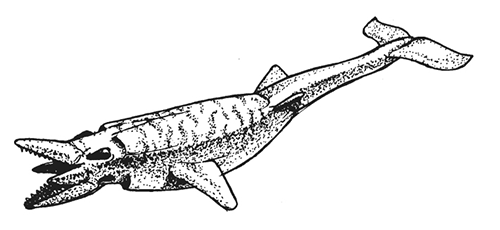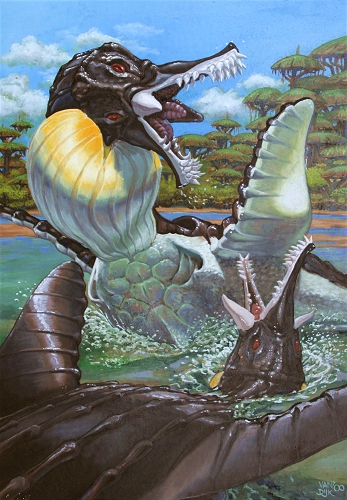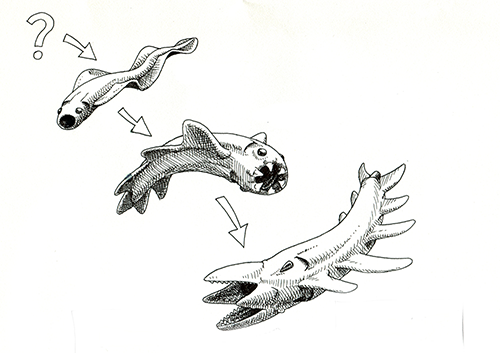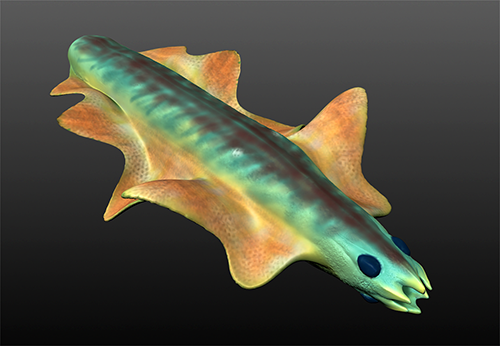
|
Flukes
Swimming, say propelling an animal through water, can be done with the equivalent of oars or paddles. It is also possible to flap a tail up or down, or both ways. Yeat another way is to 'fly' through water, like penguins or turtles do, and of course a tail or entire body can undulate or beat from side to side. All these mechanisms are among the easiest solutions of the problem on how to get through water, so evolution has found them then again and again, on Earth, and on Furaha.
Here is a straightforward example: this specimen of 'Fishes VI' has an elongated body ending in a graceful whale-like tail fluke. Like whales, it beats the tail up and down, but in contrast to most Terran whales, the tail provides propulsion on the down- as well as the upstroke.
But make no mistake: other parts of the animal need not end up looking like Terran whales or fish at all. The jaws are a nice example: there are four, not two, and they work well.
|
|
Flippers
Flippers are interesting too, in particular how many of them you can have. Terran seals swim with one pair, but plesiosaurs used two pairs. Not surprisingly given the hexapod scheme common to large Furahan animals, three pairs of flippers is a very common occurrence on Furaha.
The sawjaw already has a page in this site, but is shown here again simple to show its flippers. Not all are visible, but there really are six.
|

|
|
From membranes to flippers
The section on membranes shows how undulating membranes can be used to swim. In hexapod evolution a single contiguous membrane slowly morphed into a series of separate flippers, by way of indentations that gradually increased. This image shows some of the intermediary steps. Note that the animal at the right has much more than three sets of flippers. Such schemes appear to have existed, before the Bauplan became set to three pairs.
|

|






